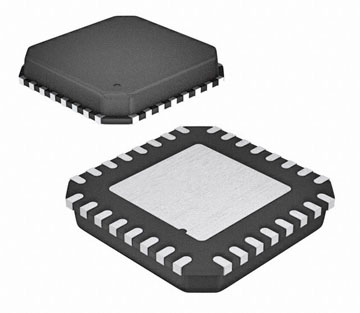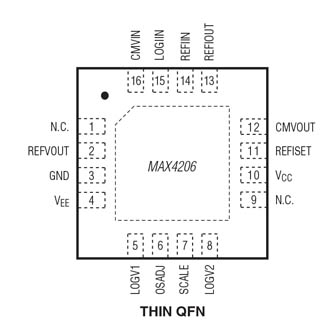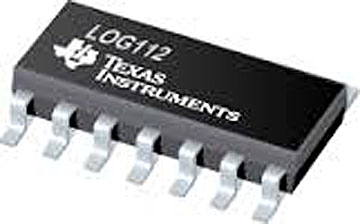An Logarithmic amplifier is good example of why we need to be careful to call these types of devices analog, not linear devices – because these are certainly not linear. Log amps can be a cost-effective solution for compressing wide dynamic range sensor signals. The combination of a log amp and a relatively low bit-count A/D converter can often save board space and system cost, removing the need for a much higher bit-count A/D. And, a low bit-count A/D may already be in your microcontroller, making it even easier. Also, a few sensors exhibit exponential transfer functions, so the log amp can straighten it out. We know the log amp has some stiff competition from a digital solution. Once you digitize your sensor signal its manipulation is pretty easy – if you have the software libraries. But the analog solution is elegant and straight forward and for some years now suppliers have been making monolithic ICs with excellent compensation and fairly low cost.
There are three major types of logarithmic amplifiers. The DC log amp works with signals up to about 1 MHz and most use the logarithmic I-to-V transfer characteristic of a pn junction. They are the ones you would most likely use with sensor inputs. These DC log amps operate on unipolar inputs (current or voltage), and are sometimes referred to as transimpedance log amps. They need to be compensated for temperature, so always check the temperature specification when specifying. These amps are also commonly also commonly used to monitor wide-dynamic-range, unipolar photodiode currents – either absolute or ratiometric. Photodiode current monitoring is a common requirement in fiber communications equipment, and can also found in a wide range of chemical and biological sample-processing instrumentation.
There is also the successive detection type of log amp, used for high frequencies up to many GHz. These designs use a number of similar cascaded linear stages having well-defined large signal behavior to produce a log output. They are used RF transceiver applications to measure received signal and control transmitter output power. And, lastly, there is the baseband log amp that operates on rapidly changing baseband signals in applications where the compression of AC signals is required (common in certain audio and video circuits).
Going back to our DC log amp, let’s look at three possible choices – one each from Analog Devices, Maxim, and Texas Instruments.

Analog Devices
The ADL5304 is a high speed logarithmic converter with a 4 MHz bandwidth, fast response, and low noise over a very wide 200 dB (1 pA to 10 mA) measurement range. It provides a nominal logarithmic slope of 200 mV/decade. The devices logarithmic intercept can be programmed with the internal 100 nA current source, or externally for ratio applications. The default intercept value of 3.162 fA places the midpoint of the measurement range of 100 nA at an output of 1.5 V. Log conformance is ±0.2 dB typical, 0.7 dB maximum from 1 nA to 100 μA. It runs from 5 V, taking 16 ma maximum, and has a 1.5 or 2.5 V reference output stable to ±30 µV/°C. Output noise spectral density is 6 μV/√Hz. The ADL5304 is available in a 32-lead, 5 × 5 mm LFCSP package with operation specified from -40° to 85°C. The chip is priced at $14.96 ea/1,500.

Maxim
The MAX4206 logarithmic amplifier has a default 0.25 V/decade scale factor and operates from a single 2.7 to 11 V supply or from ±2.7 to ±5.5 V. It is capable of measuring five decades of input current across a 10 nA to 1 mA range. The chips 0.5 V reference can generate an precision current reference using an external resistor, which adjusts the log intercept.
It also has a 10 nA to 10 µA reference current source. Log conformity error over -40° to 85°C is ±10 mv at 0.25 V/decade. The device is fast, with a unity gain bandwidth of 5 MHz, and slew rate of 12 v/µs. Its input offset voltage is 1 mV typical and 5 mV maximum with a 6 µV/°C typical temperature stability. Supply current is 5 mA max at 25°C. The chip provides a reference voltage of 1.238 V, ±0.020 V at 25°C. Total output-referred noise is specified from 0.1 to 10 Hz, at IREF = 10nA, and ILOG = 100 nA at 17 µVrms. It comes in a TQFN16 package for about $4.90 ea/100.

Texas Instruments
The LOG112A has been available since 2002 (originally a Burr-Brown device) and is still a great choice. It is trimmed to 0.5 V per decade of input current and it provides and accuracy of 0.2% FSO over five decades. The chip can operate from ±4.5 to ±18 V supplies – and apparently not from a single supply. Quiescent supply current is only 1.25 mA, typical. It has a 2.5 V reference – with ±0.05% typical, and ±0.5% maximum temperature stability.
Log conformity error is specified as 0.01% over 1 nA to 100 µA (5 decades) and 0.13% over 100 pA to 3.5 mA (7.5 decades), at room temperature. Over the 5 decade operating range, accuracy suffers a 0.0001 %/°C temperature degradation. And input offset voltage is ±0.3 mV at 25°C and ±1.5 mV maximum. Input voltage noise at 1 kHz is 30 nV/√Hz. Bandwidth is a rather complicated affair that varies over the reference current range from as low as 0.1 kHz up to 45 kHz– so we are not talking high speed here. Operating temperature is –40° to 85°C, but the specification temperature range is a rather odd –5°C to +75°C. The chip comes in a SO-14 package that is 0.344 inches long. It will cost you about $14 in single quantity and is in stock lots of places.
Advertisement
Learn more about Analog DevicesMaxim IntegratedTexas Instruments





